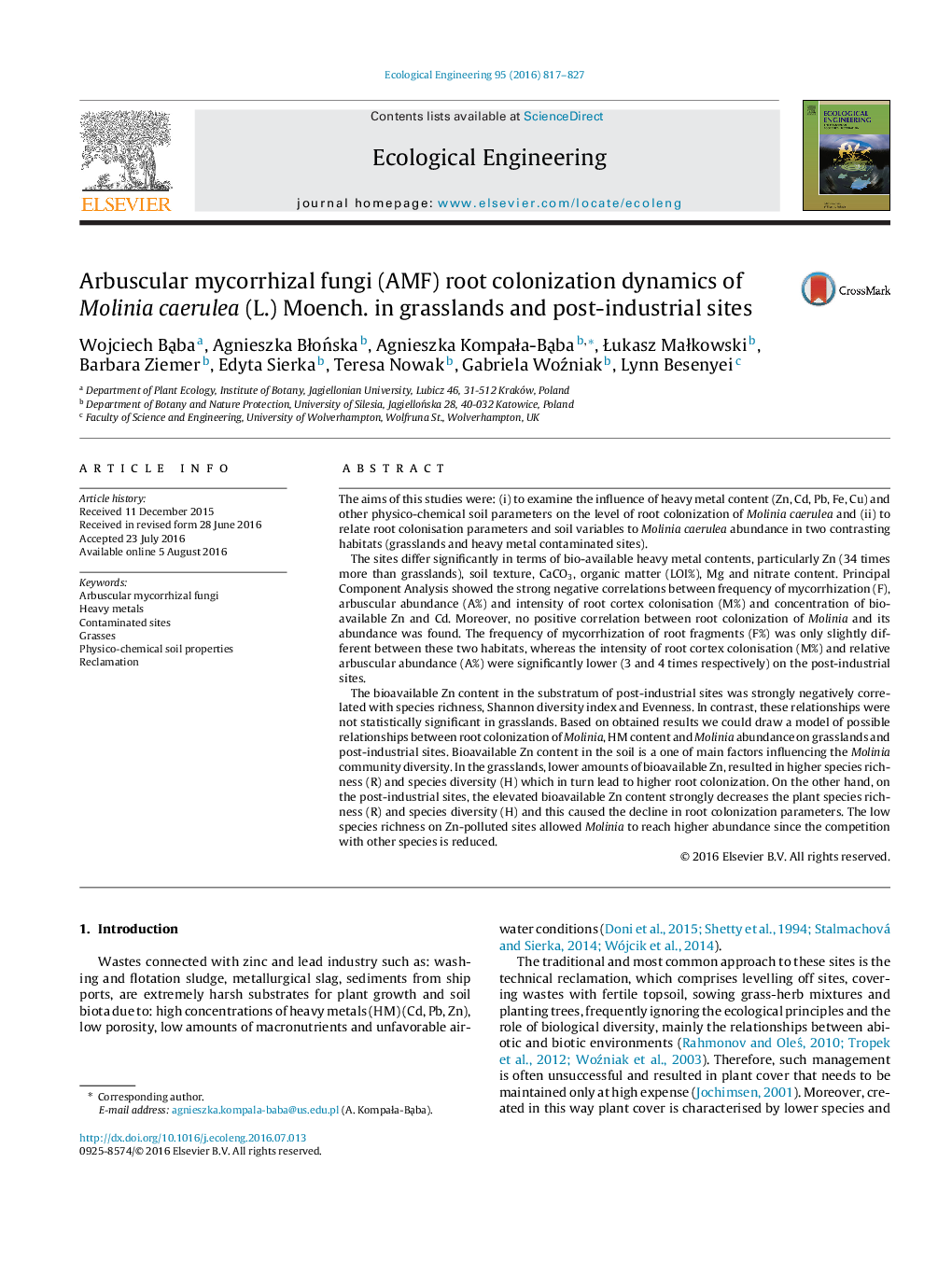| کد مقاله | کد نشریه | سال انتشار | مقاله انگلیسی | نسخه تمام متن |
|---|---|---|---|---|
| 4388513 | 1618004 | 2016 | 11 صفحه PDF | دانلود رایگان |

• Effects of soil heavy metal content on Molinia caerulea mycorrhizal root colonization were tested.
• Higher bioavailable heavy metal content, particularly Zn reduced root colonization of Molinia caerulea.
• Molinia caerulea abundance does not strongly depend on the presence of mycorrhiza.
• Molinia caerulea could be a promising species in reclamation work.
The aims of this studies were: (i) to examine the influence of heavy metal content (Zn, Cd, Pb, Fe, Cu) and other physico-chemical soil parameters on the level of root colonization of Molinia caerulea and (ii) to relate root colonisation parameters and soil variables to Molinia caerulea abundance in two contrasting habitats (grasslands and heavy metal contaminated sites).The sites differ significantly in terms of bio-available heavy metal contents, particularly Zn (34 times more than grasslands), soil texture, CaCO3, organic matter (LOI%), Mg and nitrate content. Principal Component Analysis showed the strong negative correlations between frequency of mycorrhization (F), arbuscular abundance (A%) and intensity of root cortex colonisation (M%) and concentration of bio-available Zn and Cd. Moreover, no positive correlation between root colonization of Molinia and its abundance was found. The frequency of mycorrhization of root fragments (F%) was only slightly different between these two habitats, whereas the intensity of root cortex colonisation (M%) and relative arbuscular abundance (A%) were significantly lower (3 and 4 times respectively) on the post-industrial sites.The bioavailable Zn content in the substratum of post-industrial sites was strongly negatively correlated with species richness, Shannon diversity index and Evenness. In contrast, these relationships were not statistically significant in grasslands. Based on obtained results we could draw a model of possible relationships between root colonization of Molinia, HM content and Molinia abundance on grasslands and post-industrial sites. Bioavailable Zn content in the soil is a one of main factors influencing the Molinia community diversity. In the grasslands, lower amounts of bioavailable Zn, resulted in higher species richness (R) and species diversity (H) which in turn lead to higher root colonization. On the other hand, on the post-industrial sites, the elevated bioavailable Zn content strongly decreases the plant species richness (R) and species diversity (H) and this caused the decline in root colonization parameters. The low species richness on Zn-polluted sites allowed Molinia to reach higher abundance since the competition with other species is reduced.
Journal: Ecological Engineering - Volume 95, October 2016, Pages 817–827